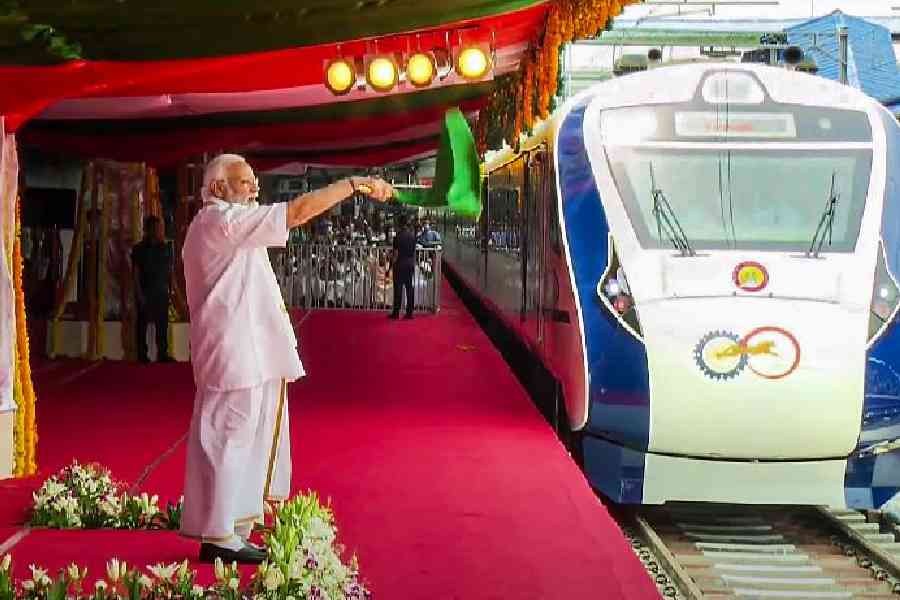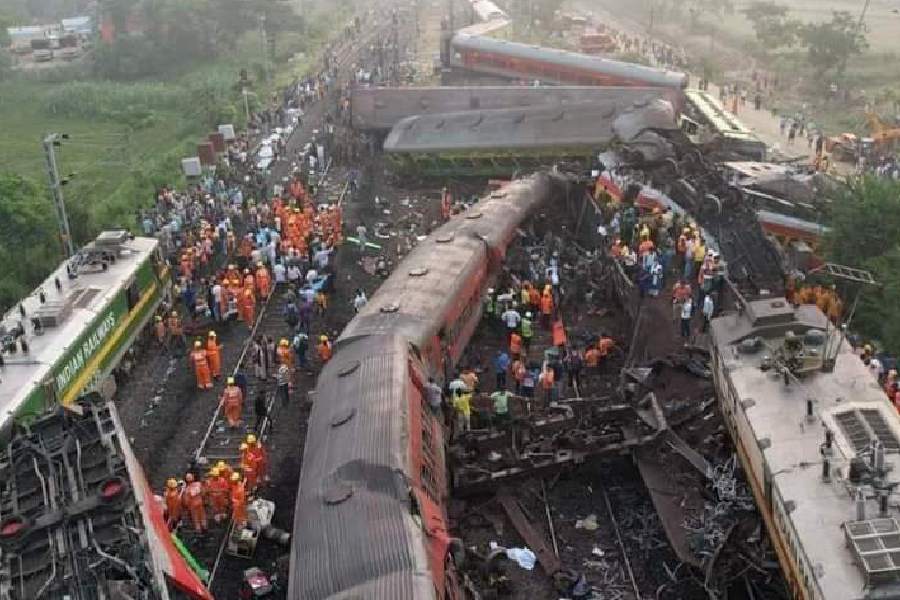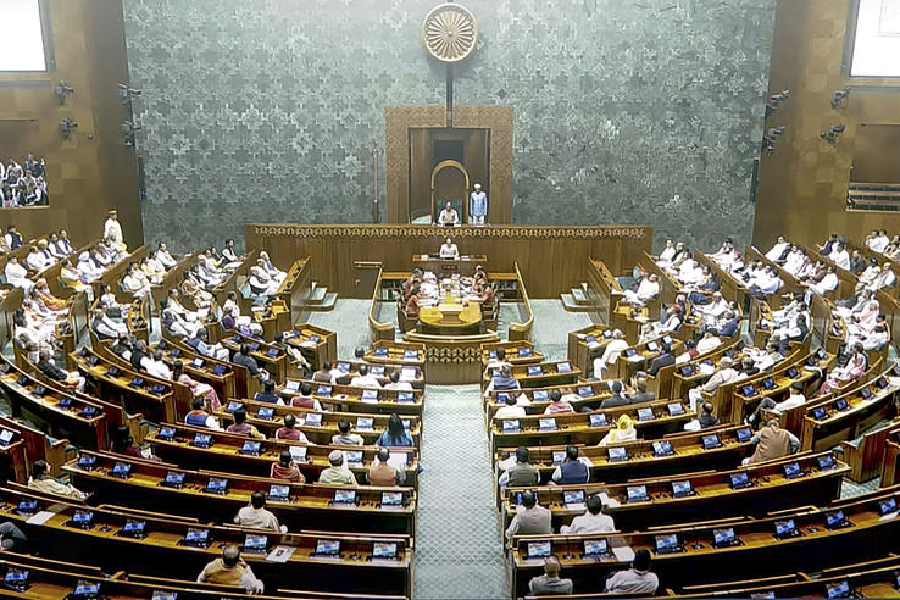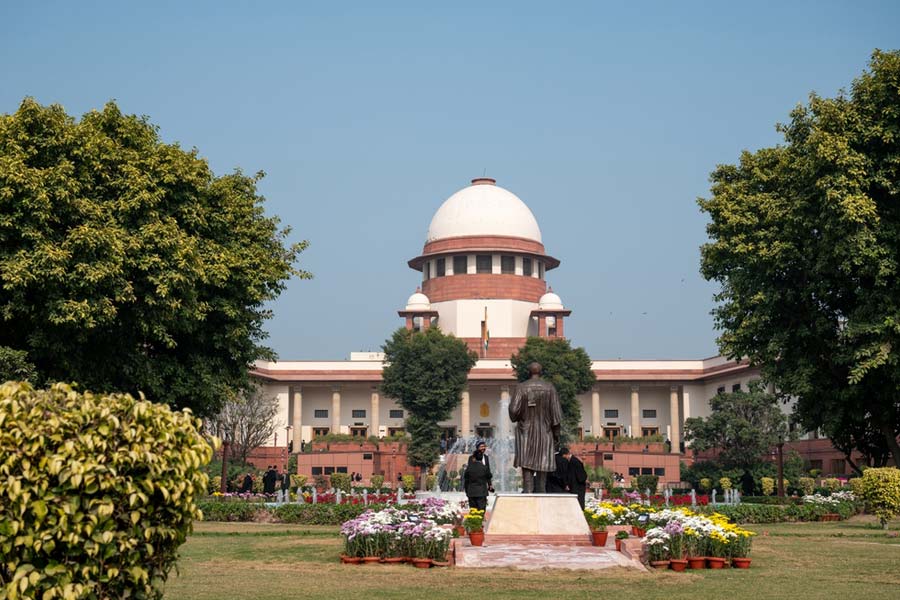The deadly train crash in Odisha on Friday occurred against the backdrop of a railway campaign to launch high-speed trains amid declining resources for track inspections and shortfalls in pledged funds for critical safety-related works.
Government audit documents show that the internal funds the railways generated for a safety initiative launched in 2017-18 — focused on train collision avoidance, replacement of overage signals and other safety aspects — fell short of the target every year for four years.
The sequence of events that led to Friday’s triple train collision and derailments near Bahanaga station in Balasore district is under investigation.
Railway engineers and locomotive pilots say that early reports from the accident site indicate two possibilities — a train derailment followed by collisions, or the failure of a so-called interlocking system that diverted a train to the wrong tracks, resulting in the collisions.
A derailment could result from any one — or a combination — of several factors relating to tracks, coaches, track-diverting points and train operations, according to railway engineers and locomotive pilots.
An interlocking system failure could be an outcome of electromechanical faults, poor maintenance, or delayed replacement coupled with poor human supervision.
“We don’t know what happened at Bahanaga, but we’ve been concerned about inadequate investments in the maintenance of tracks and signalling systems,” said a loco pilot who operates trains across Karnataka, Tamil Nadu and Andhra Pradesh. “Staff shortages also contribute to poor maintenance.”
A report from India’s Comptroller and Auditor General (CAG), which had analysed dozens of derailments and 11 train collisions between 2017-18 and 2020-21, had flagged 30 per cent to 100 per cent shortfalls in inspections to assess the geometric and structural conditions of railway tracks.
Along some segments of tracks in the South East Region, for instance, the railways conducted only 16 inspections instead of a mandated 32. Along other segments in the same region, the railways conducted only 3 inspections instead of the mandated 18.
The CAG report, released in December 2022, noted that track machines lay idle because operational departments did not assign segments or operational problems, or because staff were unavailable.
The lack of adequate inspections led to track parameters being left unchecked, with “implications on the overall safety of train operations, including derailment”, the CAG report said.
The inadequacies and shortfalls have occurred amid the Narendra Modi government’s campaign to launch high-speed trains, including the Vande Bharat trains that can run at speeds of up to 160kmph and have been flaunted as a “Make-in-India success story”.
Modi had flagged off the first Vande Bharat train between Delhi and Varanasi in February 2019. The railway ministry said in February 2022 that it planned to introduce 400 Vande Bharat trains over the next three years. This year, till April 12, Modi had flagged six Vande Bharat trains.
“We need a greater focus on the ground infrastructure that includes safety systems: funds by themselves aren’t enough. There is a need to focus on infrastructure,” said Sudhanshu Mani, former general manager with the railways who had led the Vande Bharat train project.
The CAG also found that the Rashtriya Rail Sanraksha Kosh (RRSK), a five-yearsafety initiative launched in 2017-18, had not received the expected Rs 5,000 crore annually from the railways’ internal resources for at least the first four years of the initiative.
The audit found that while the initiative received the gross budgetary support of Rs 15,000 crore annually, over the four years from 2017-18 to 2020-21, the railways contributed a total of only Rs 4,225 crore instead of the mandated Rs 20,000 crore.
The allotment of funds for track renewal works declined from around Rs 9,600 crore in 2018-19 to Rs 7,400 crore in 2019-20.
The CAG report also found “an increasing trend towards expenditure on non-priority works” against the guiding principles of the RRSK.












